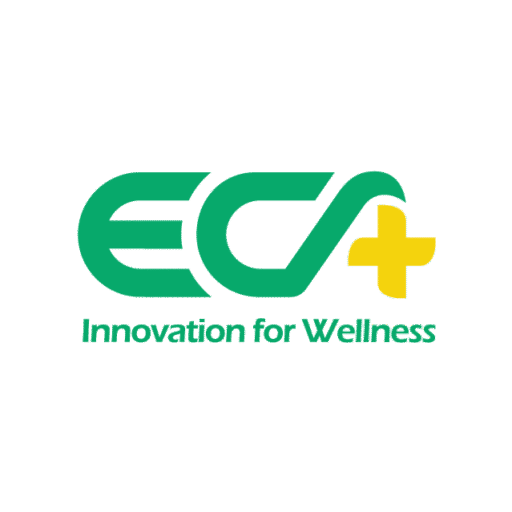NAD⁺ Boosters: Safety, Mechanism of Action, Clinical Trials, and Regulatory Considerations
Introduction
Nicotinamide adenine dinucleotide (NAD⁺) is a crucial coenzyme involved in various cellular processes, including energy metabolism, DNA repair, and gene expression. Its levels decline with age, contributing to various age-related diseases. NAD⁺ boosters, such as nicotinamide mononucleotide (NMN) and nicotinamide riboside (NR), have gained attention for their potential to restore NAD⁺ levels and mitigate age-related conditions. This review discusses the safety, mechanism of action, clinical trials, and regulatory considerations of NAD⁺ boosters.
Mechanism of Action
NAD⁺ Biosynthesis and Precursors
NAD⁺ is synthesized through two main pathways: the de novo pathway, using tryptophan, and the salvage pathway, using nicotinamide or nicotinic acid. NAD⁺ precursors like NMN and NR are key intermediates in these pathways. NMN is converted to NAD⁺ via the enzyme NMN adenylyltransferase (NMNAT), while NR is converted through nicotinamide riboside kinase (NRK) or nicotinamide riboside phosphorylase (NRPP) (Hong et al., 2020) (Bogan & Brenner, 2008) (Wang et al., 2024).
Role of Sirtuins
Sirtuins, a family of NAD⁺-dependent deacetylases, play a critical role in various cellular processes, including aging, inflammation, and metabolism. NAD⁺ boosters enhance sirtuin activity, which has been linked to improved mitochondrial function, reduced oxidative stress, and anti-inflammatory effects (“Therapeutic Potential of NAD+ Precursors and Aging-related Diseases”, 2022) (Hong et al., 2020) (Wang et al., 2024).
Cellular Energy Metabolism
NAD⁺ is essential for glycolysis, the citric acid cycle, and oxidative phosphorylation. By boosting NAD⁺ levels, NMN and NR enhance cellular energy production, which is particularly beneficial in conditions associated with energy deficits, such as aging and metabolic disorders (Deng et al., 2024) (Blanco-Vaca et al., 2022) (Yi et al., 2022).
Safety of NAD⁺ Boosters
Preclinical Safety
Preclinical studies have consistently shown that NMN and NR are safe and well-tolerated in animal models. These studies have demonstrated no significant adverse effects, even at high doses, and have highlighted their potential to improve various age-related conditions (“Therapeutic Potential of NAD+ Precursors and Aging-related Diseases”, 2022) (Hong et al., 2020) (Wang et al., 2024).
Clinical Safety
Clinical trials have further supported the safety of NAD⁺ boosters. For example, a randomized, double-blind, placebo-controlled study of NMN supplementation in healthy adults found no serious adverse events, with only mild and transient side effects reported (Yi et al., 2022) (Fukamizu et al., 2022). Similarly, studies on NR have shown that it is safe and well-tolerated in both healthy individuals and those with chronic conditions (Dellinger et al., 2017) (Hawkins et al., 2024).
Dose-Dependent Safety
The safety of NAD⁺ boosters appears to be dose-dependent. A clinical trial on NMN supplementation in healthy middle-aged adults found that doses up to 900 mg daily were safe and well-tolerated, with no significant adverse events reported (Yi et al., 2022). Similarly, a study on NR found that doses up to 2,000 mg daily were safe and effective in increasing NAD⁺ levels (Berven et al., 2023).
Clinical Trials
NMN Supplementation
NMN supplementation has been studied in various clinical trials, with a focus on its effects on NAD⁺ levels, physical performance, and metabolic health. A randomized, double-blind, placebo-controlled trial in healthy middle-aged adults found that NMN supplementation significantly increased blood NAD⁺ levels and improved physical performance, as measured by the six-minute walking test (Yi et al., 2022). Another study found that NMN supplementation reduced blood glucose levels and improved insulin sensitivity in healthy adults (Xue et al., 2022).
NR Supplementation
NR supplementation has also been studied in various clinical trials. A randomized, double-blind, placebo-controlled trial in healthy adults found that NR supplementation increased NAD⁺ levels and improved mitochondrial function (Elhassan et al., 2019). Another study found that NR supplementation reduced inflammatory cytokines and improved insulin sensitivity in aged individuals (Elhassan et al., 2019) (Freeberg et al., 2023).
Combination Therapies
Some clinical trials have investigated the effects of combining NAD⁺ boosters with other compounds. For example, a study combining NR with pterostilbene found that the combination increased NAD⁺ levels and improved cardiovascular risk factors, such as blood pressure and C-reactive protein levels (Dellinger et al., 2017) (Lei et al., 2023).
Clinical Efficacy
The clinical efficacy of NAD⁺ boosters has been demonstrated in various studies. For example, a randomized, double-blind, placebo-controlled trial found that NMN supplementation improved physical performance and reduced biological age in healthy middle-aged adults (Yi et al., 2022). Another study found that NR supplementation improved insulin sensitivity and reduced inflammation in individuals with type 2 diabetes (Freeberg et al., 2023).
Regulatory Considerations
Current Regulatory Status
NAD⁺ boosters are currently classified as dietary supplements in many countries, including the United States. As such, they are not subject to the same regulatory requirements as pharmaceutical drugs. However, their safety and efficacy are being increasingly studied in clinical trials, and regulatory agencies are beginning to take notice of their potential therapeutic applications (Blanco-Vaca et al., 2022) (Benjamin & Crews, 2024) (Freeberg et al., 2023).
Future Regulatory Directions
As the evidence for the safety and efficacy of NAD⁺ boosters grows, regulatory agencies may consider classifying them as drugs for specific indications. This would require more rigorous testing and regulatory oversight, including large-scale clinical trials to establish their safety and efficacy for specific conditions (Blanco-Vaca et al., 2022) (Benjamin & Crews, 2024) (Freeberg et al., 2023).
Challenges in Regulation
One of the challenges in regulating NAD⁺ boosters is the lack of standardized dosing and formulations. Clinical trials have used a wide range of doses and formulations, making it difficult to compare results across studies. Additionally, the long-term effects of NAD⁺ boosters in humans are not yet fully understood, and more research is needed to establish their safety and efficacy for chronic use (Blanco-Vaca et al., 2022) (Benjamin & Crews, 2024) (Freeberg et al., 2023).
Conclusion
NAD⁺ boosters, such as NMN and NR, have shown promise in increasing NAD⁺ levels and improving various age-related conditions. Their safety has been supported by both preclinical and clinical studies, with minimal adverse effects reported. Clinical trials have demonstrated their efficacy in improving physical performance, insulin sensitivity, and cardiovascular health. However, further research is needed to establish their long-term safety and efficacy, and regulatory considerations will play a crucial role in their future development and use.


